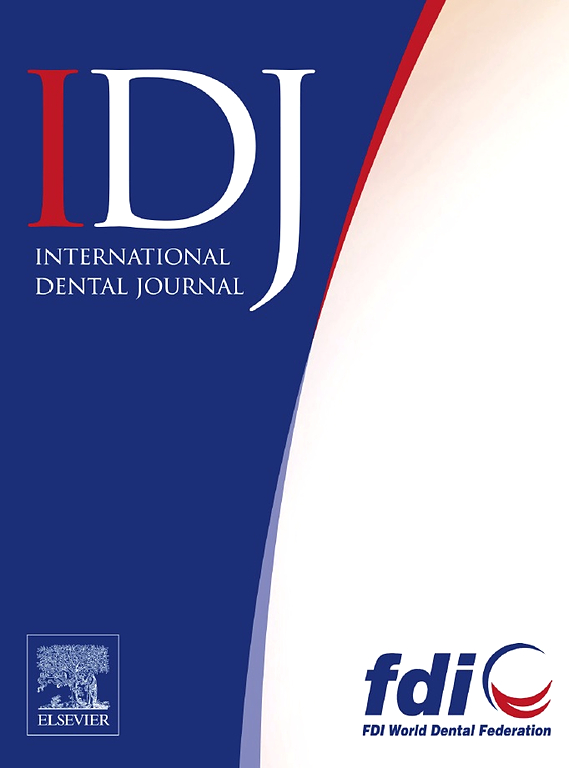长链非编码RNA MIR4435-2HG参与人牙髓干细胞成骨分化和炎症
IF 3.2
3区 医学
Q1 DENTISTRY, ORAL SURGERY & MEDICINE
引用次数: 0
摘要
牙髓炎是一种常见的口腔疾病,有必要对其发病机制和治疗靶点进行研究。本研究旨在阐明长链非编码RNA MIR4435-2宿主基因(MIR4435-2HG)在体外牙髓细胞成骨分化和炎症反应中的功能,为牙髓炎的机制和潜在的治疗策略提供新的见解。方法采用实时荧光定量PCR法检测髓样中MIR4435-2HG的表达。利用人牙髓干细胞(hDPSCs)研究MIR4435-2HG对成骨分化的影响。用脂多糖(LPS)处理hdpsc诱导炎症反应。采用细胞计数试剂盒-8和细胞凋亡法分别检测hDPSCs的活力和凋亡。通过双荧光素酶报告基因测定证实了MIR4435-2HG和miR-296-5p之间的靶向关系。结果smir4435 - 2hg在炎症牙髓组织中表达上调,在区分健康牙髓和炎症牙髓方面表现出良好的作用。在成骨诱导的hDPSCs中,MIR4435-2HG抑制碱性磷酸酶活性和成骨标志物(牙本质基质蛋白-1和牙本质唾液磷酸化蛋白)的表达。在lps刺激的hDPSCs中,MIR4435-2HG的敲低降低了炎症介质(TNF-α、IL-1β和IL-6)的mRNA水平,促进了细胞增殖,抑制了细胞凋亡。miR-296-5p被MIR4435-2HG负向调节,miR-296-5p的下调抵消了MIR4435-2HG敲低对炎症和细胞表型的影响。结论MIR4435-2HG抑制成骨分化,同时通过miR-296-5p调控促进脂多糖引发的hdpsc炎症。本研究探讨了MIR4435-2HG如何调节hDPSCs的成骨分化并调节lps诱导的炎症反应。研究结果揭示了其可能参与牙髓炎的发病机制,并提示其在牙组织修复方面的治疗潜力。本文章由计算机程序翻译,如有差异,请以英文原文为准。
Long Noncoding RNA MIR4435-2HG is Involved in Osteogenic Differentiation and Inflammation in Human Dental Pulp Stem Cells
Introduction and aims
Pulpitis is a common oral pathology, necessitating an investigation into its pathogenesis and therapeutic targets. The aim of this study was to elucidate the function of long noncoding RNA MIR4435-2 host gene (MIR4435-2HG) in osteogenic differentiation and inflammatory response of dental pulp cells in vitro, offering insights into pulpitis mechanisms and potential treatment strategies.
Methods
The expression of MIR4435-2HG was quantified by real-time quantitative PCR in pulp samples. Human dental pulp stem cells (hDPSCs) were utilized to investigate the impact of MIR4435-2HG on osteogenic differentiation. Inflammatory responses were induced by treating hDPSCs with lipopolysaccharide (LPS). The viability and apoptosis of hDPSCs were determined using Cell Counting Kit-8 and Apoptosis assays, respectively. The targeting relationship between MIR4435-2HG and miR-296-5p was substantiated using Dual-Luciferase reporter gene assay.
Results
MIR4435-2HG was upregulated in the inflamed pulp tissues and exhibited favourable efficacy in differentiating between healthy and inflamed pulp. In osteogenesis-induced hDPSCs, MIR4435-2HG suppressed alkaline phosphatase activity and the expression of osteogenic markers (dentin matrix protein-1 and dentin salivary phosphoprotein). In LPS-stimulated hDPSCs, knockdown of MIR4435-2HG decreased the mRNA levels of inflammatory mediators (TNF-α, IL-1β, and IL-6), promoted cell proliferation, and repressed apoptosis. miR-296-5p was negatively modulated by MIR4435-2HG, and downregulation of miR-296-5p counteracted the effects of MIR4435-2HG knockdown on inflammation and cellular phenotype.
Conclusion
The present investigation indicates that MIR4435-2HG suppresses osteogenic differentiation while facilitating LPS-triggered inflammation in hDPSCs through miR-296-5p modulation.
Clinical relevance
This study investigated how MIR4435-2HG regulates osteogenic differentiation in hDPSCs and modulates LPS-induced inflammatory reactions. The findings shed light on its possible involvement in pulpitis pathogenesis and suggest its therapeutic potential for dental tissue repair.
求助全文
通过发布文献求助,成功后即可免费获取论文全文。
去求助
来源期刊

International dental journal
医学-牙科与口腔外科
CiteScore
4.80
自引率
6.10%
发文量
159
审稿时长
63 days
期刊介绍:
The International Dental Journal features peer-reviewed, scientific articles relevant to international oral health issues, as well as practical, informative articles aimed at clinicians.
 求助内容:
求助内容: 应助结果提醒方式:
应助结果提醒方式:


